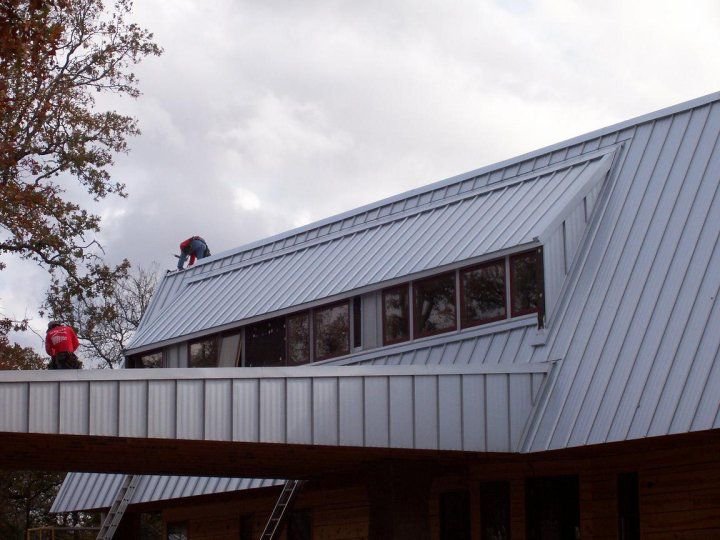 A proper roofing ventilation system for a home is one good way to save on energy costs. Ridge and soffit outlets only perform well when both have been installed; the installation of only one will usually result in high heating costs and system inefficiency. It is important to understand how both of these air intake and outflow openings work together to correct problems such as water condensation, ice dam leaks, mold and other such structural damages.
A proper roofing ventilation system for a home is one good way to save on energy costs. Ridge and soffit outlets only perform well when both have been installed; the installation of only one will usually result in high heating costs and system inefficiency. It is important to understand how both of these air intake and outflow openings work together to correct problems such as water condensation, ice dam leaks, mold and other such structural damages.
The structural design of a roof needs to include both ridge and soffit openings in order for the system to properly function. Following are some common issues found in ventilation systems:
- Ridge Vent – If this is the only airflow passageway installed, or if there is an inadequate soffit opening, there are several structural problems that may result because of the risk of ice dams. This is caused by increased attic heat loss due to inadequate airflow. Creating a sufficient intake passage at the eaves will resolve this problem.
- Soffit Vent – Only having this passage without any ridge openings will work better in comparison to the scenario discussed above. This design is the one that is used in a number of residential houses; however, without having openings on both parts of the structure, ventilation works less effectively for two reasons. First, attic space air movement only occurs when wind is blown from one side of the building through the other via a vented overhang and secondly, without a proper exit opening, warm air has no way to exit through natural convection.
- Inefficient Vent Design – Passageways that are obstructed by louvers or insect screens will limit airflow as will any intake openings that are round or octagon shaped. Proper location and minimal obstruction of the ducts on the underside is necessary to keep the edges dry and cool and to ensure a continuous air flow.
- Mold Growth – The growth of mold on various parts of the HVAC system in the attic will eventually result in structural and health issues. A mold clean-up project is just a temporary solution and will not correct the condition. Too much moisture in this area causes a rapid increase of mildew and other allergens. Determining the source of moisture and correcting the building’s ventilation system should solve this problem, keeping those surfaces dry and cool.
- Ice Dams – Heat loss from the attic space can cause leaks as a result of the melting of the bottom layer of the snow. When this melted water runs down the length of the eaves and refreezes, it will form ice dams, which eventually will result in leaks and other major problems. A major cause of the formation of the ice problem is insufficient attic insulation.
- Climate – A location’s climate enters into every ventilation system decision, as what works in cold climates may not work in warm ones and vice versa. The one common factor whatever the climate may be is that soffit vents are most effective when used in conjunction with a continuous ridge vent. That can then be adjusted, as necessary, for any climatic change requirements.
An efficient roofing system design requires both ridge and soffit ventilation. This will keep an entire roof surface cold enough and limit uneven snow melting; prevent ice dams; and keep the entire attic space and surrounding areas dry and cool!
If You Need a Montgomery Roof Company, Call Schulte Roofing to Help Your Roof!
Are you looking for a Montgomery roof company to design a roof with proper ventilation? Call Schulte Roofing at 800-367-7663 to answer any questions about attic ventilation as well as help all Montgomery area customers with any roofing needs!
